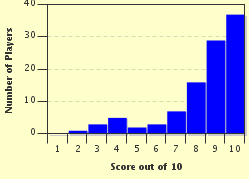Quiz Answer Key and Fun Facts
1. The bird in the picture is one of the UK's most frequently seen birds, the wood pigeon. You find their 'cooing' song very melodious and would like to attract them to your garden. They do eat a variety of foods, but which forms the bulk of their diet, and will tempt them to your bird table?
2. The bird in the picture is a barn owl, found across most parts of the UK. If you are out birdwatching hoping to catch a glimpse of one, when and where is the best time to go?
3. The very small bird in the picture is a wren, the most prolific breeder of all the UK's wild birds. A common visitor to British gardens, which of the choices below describes their diet?
4. With the Latin name of Pica pica, the magpie (pictured) belongs to the family Corvidae, which includes crows, rooks, ravens and jays. Highly likely to be a rather aggressive visitor to your garden, how would you describe the diet of the magpie?
5. If you were an avid birdwatcher and wanted to see a golden eagle (pictured) in the UK, where would you need to go to find one?
6. On your birdwatching tour of the UK, in which habitat would you be most likely to see the pied avocet (pictured)?
7. The bird in the picture is a female blackbird, which looks different from the male of the species. If you were out birdwatching and hoping to see a male blackbird, in which way would his appearance differ?
8. Birds have their own view on how and where to nest and raise their growing family, and not all species have the same preference. If you want to encourage a blue tit (pictured) to take up residence in your garden, so you can observe their behaviour nearer to home, it is a good idea to put up a nesting box for them.
9. If you were on a birdwatching walk and happened to see a skein of geese flying overhead, how would you describe the formation of this group in flight?
10. Lastly, this quiz would not be complete without mentioning this little bird, the robin. It is the national bird of the United Kingdom, and one of the best-known, often to be found adorning Christmas cards. Always happy to set up home in a garden, what is the robin's main diet of choice?
Source: Author
Jennifer5
This quiz was reviewed by FunTrivia editor
rossian before going online.
Any errors found in FunTrivia content are routinely corrected through our feedback system.

